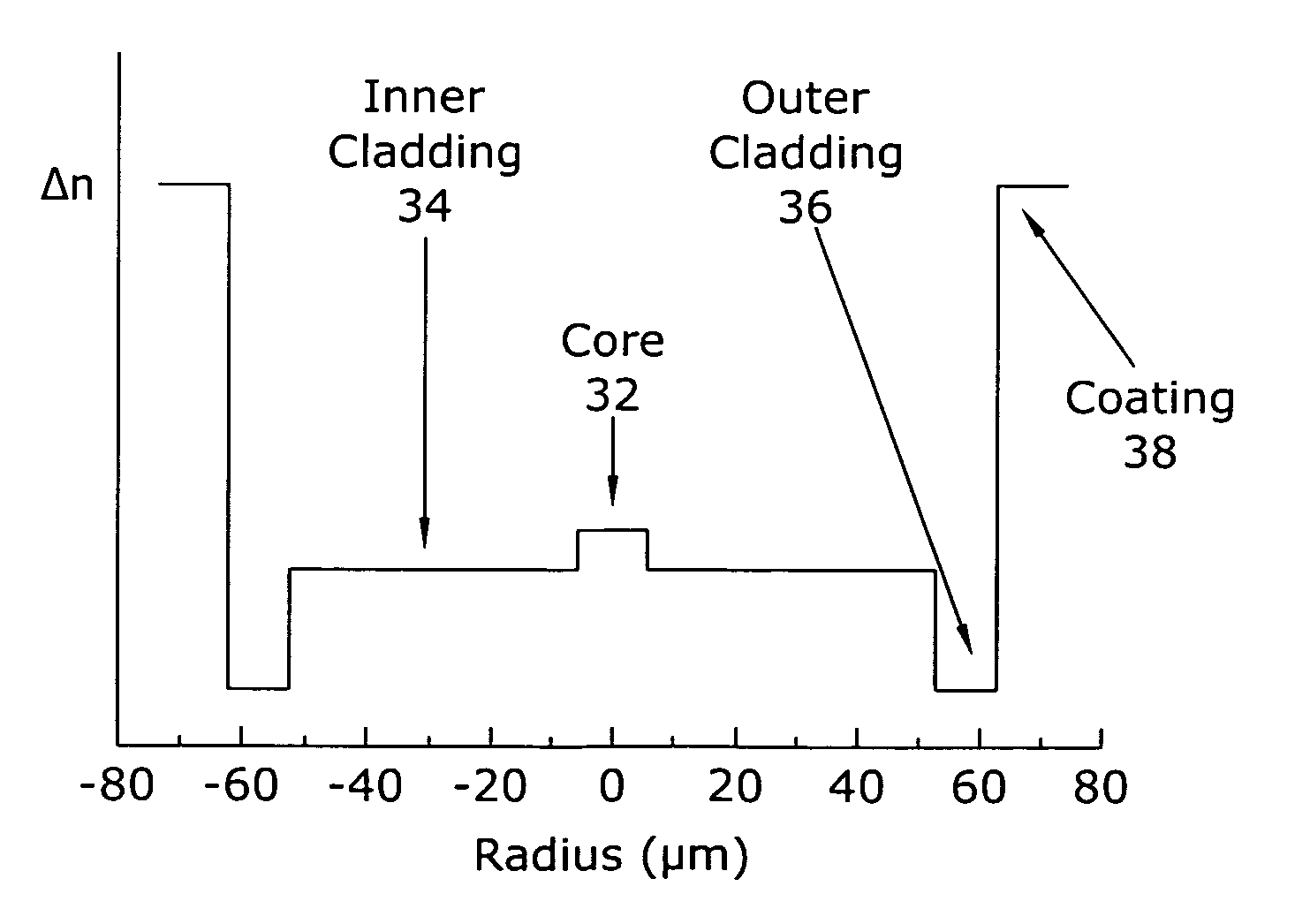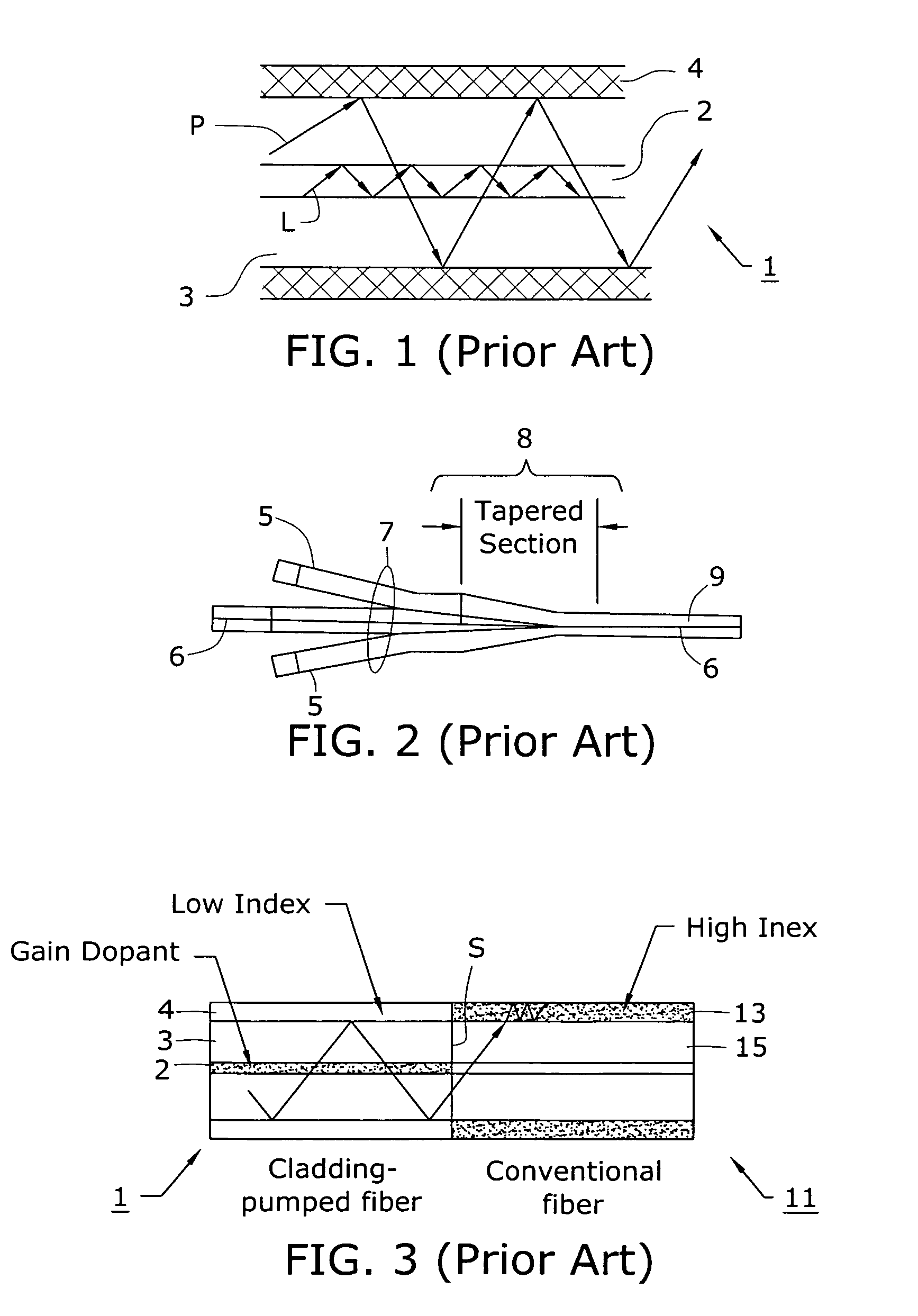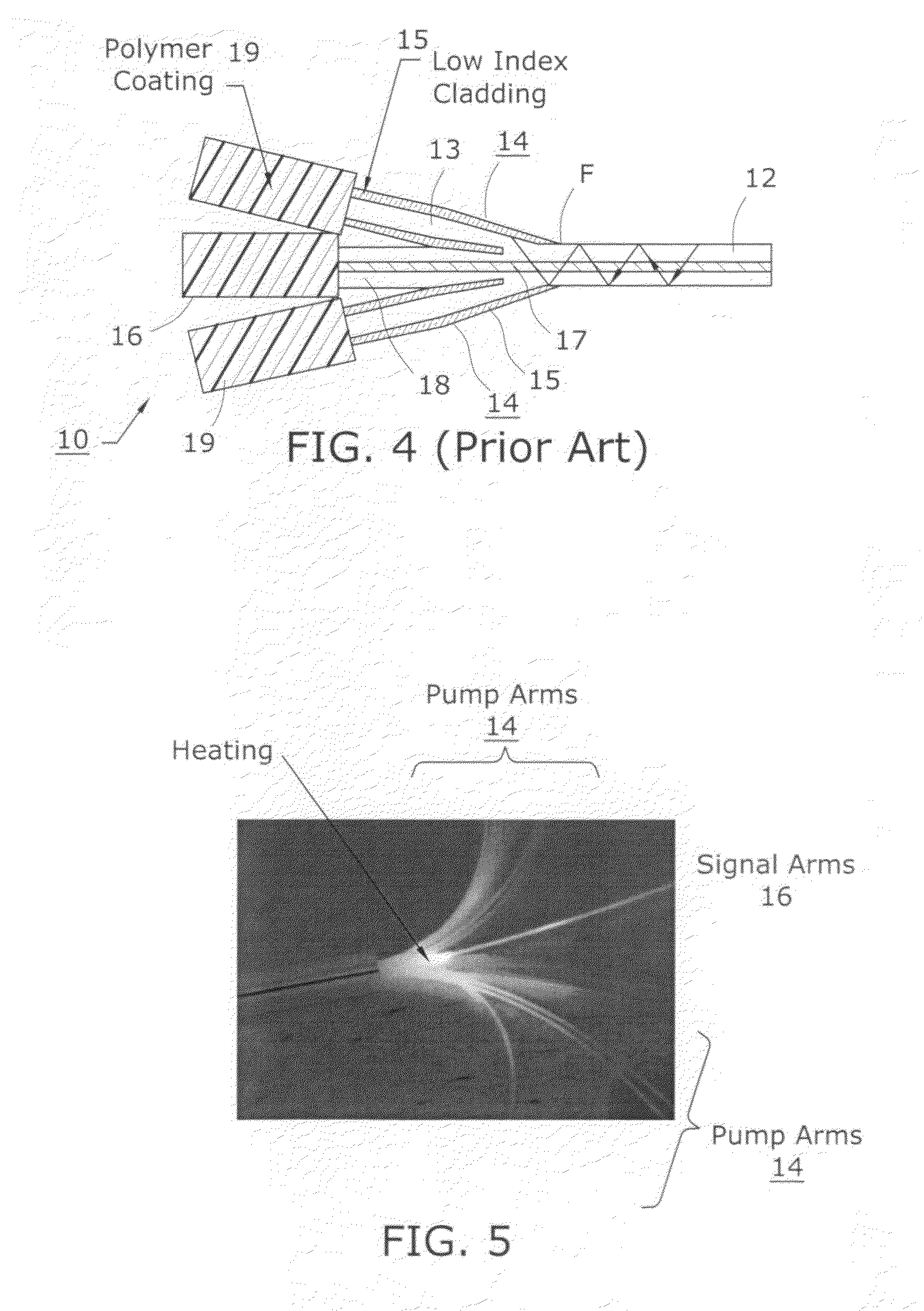Optical fiber configuration for dissipating stray light
a technology of optical fiber and stray light, applied in the field of optical fiber, can solve the problems of preventing full utilization of the potential of cladding-pumped fiber devices, catastrophic heating, and the presence of “stray light” within the system, and achieve the effect of increasing the presence of stray ligh
- Summary
- Abstract
- Description
- Claims
- Application Information
AI Technical Summary
Benefits of technology
Problems solved by technology
Method used
Image
Examples
Embodiment Construction
[0031]An exemplary prior art tapered fiber bundle 10 is shown in FIG. 4, in this case illustrating the propagation of backward-scattering stray light that re-enters bundle 10 from a cladding-pumped fiber 12 that is fused to bundle 10. Bundle 10 is illustrated as comprising a plurality of pump fibers 14 and a signal fiber 16. Using methods well-known in the art, bundle 10 is adiabatically tapered down until its outer diameter matches the outer diameter of cladding-pumped fiber 12 at location F, where the two fibers are then fusion spliced together. Signal fiber 16 comprises a core region 17 (which may be single mode or multimode), surrounded by a relatively large diameter (e.g., 125 μm) cladding layer 18. Pump fibers 14 comprise a relatively large silica core 13 (e.g., 105 μm) and a thin (e.g., 10 μm), low-index cladding layer 15. As discussed above, the refractive index of cladding layer 18 is less than the refractive index of core region 17 so as to confine the propagating signal l...
PUM
 Login to view more
Login to view more Abstract
Description
Claims
Application Information
 Login to view more
Login to view more - R&D Engineer
- R&D Manager
- IP Professional
- Industry Leading Data Capabilities
- Powerful AI technology
- Patent DNA Extraction
Browse by: Latest US Patents, China's latest patents, Technical Efficacy Thesaurus, Application Domain, Technology Topic.
© 2024 PatSnap. All rights reserved.Legal|Privacy policy|Modern Slavery Act Transparency Statement|Sitemap



